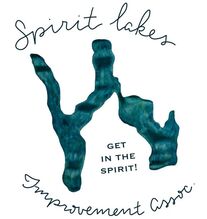June 27, 2015
Greetings SLIA Members,
Exciting news! On July 18, 2015, Ken and Vicki Kroiss will be participating in the Loon Watch on North Spirit Lake. Every five years since 1985, LoonWatch has conducted a one-day loon survey on a pre-selected group of lakes to estimate the size and distribution of Wisconsin’s Common Loon population. This survey is vital to assessing the effectiveness of current conservation efforts with the loon population. Ken and Vicki will be counting Common Loons only.
The count during the specific hours may show “0” and that is okay, but it is critical North Spirit Lake is surveyed. Any loons seen on previous days or times will not be counted in this one-day study.
Ken and Vicki have also become the Loon Rangers for both Spirit Lake and North Spirit Lake. This study is not a snap shot picture of our loon population as discussed in the first two paragraphs. This is a season long observation and Ken and Vicki are asking for your help. The efforts we put in collectively will help provide a clear picture of Common Loon reproductive success and population trends in Northern Wisconsin. Northland College leads these studies and trains the rangers at several times throughout the year.
The loon is a sentinel species-a living symbol of clean water, good fisheries, and an indicator of healthy aquatic ecosystems. As rangers and reporters we can be the voice for loons and their healthy aquatic habitat. We can help provide protection and stewardship for loons on our lake and throughout the lakes area where you reside.
Ken and Vicki will collect six or more observations between May 15 and July 15-as well as two observations of chicks in August, (if any hatched) and this data will be added to an important analysis of population dynamics to determine the status of loons in the state. Kroiss’ also need to count the number of floaters observed on the lake. They are looking for the maximum number of floaters you observe at one time. Floaters are usually seen on the lake but are unsuccessful claiming a territory, finding a mate, or are relatively young loons. They are often seen alone, occasionally in large groups, and do not reproduce. That information will help researchers determine if floaters will intrude on territorial pairs, and if increasing intrusions will cause lower productivity, or less chicks.
If in your travels on the lake or from the shoreline, you see floaters, could you count them, record the time and area, and email Kroiss’[email protected]. The more accurate the count the better picture we can send to Northland College.
Any questions, please also email Vicki or Ken.
Greetings SLIA Members,
Exciting news! On July 18, 2015, Ken and Vicki Kroiss will be participating in the Loon Watch on North Spirit Lake. Every five years since 1985, LoonWatch has conducted a one-day loon survey on a pre-selected group of lakes to estimate the size and distribution of Wisconsin’s Common Loon population. This survey is vital to assessing the effectiveness of current conservation efforts with the loon population. Ken and Vicki will be counting Common Loons only.
The count during the specific hours may show “0” and that is okay, but it is critical North Spirit Lake is surveyed. Any loons seen on previous days or times will not be counted in this one-day study.
Ken and Vicki have also become the Loon Rangers for both Spirit Lake and North Spirit Lake. This study is not a snap shot picture of our loon population as discussed in the first two paragraphs. This is a season long observation and Ken and Vicki are asking for your help. The efforts we put in collectively will help provide a clear picture of Common Loon reproductive success and population trends in Northern Wisconsin. Northland College leads these studies and trains the rangers at several times throughout the year.
The loon is a sentinel species-a living symbol of clean water, good fisheries, and an indicator of healthy aquatic ecosystems. As rangers and reporters we can be the voice for loons and their healthy aquatic habitat. We can help provide protection and stewardship for loons on our lake and throughout the lakes area where you reside.
Ken and Vicki will collect six or more observations between May 15 and July 15-as well as two observations of chicks in August, (if any hatched) and this data will be added to an important analysis of population dynamics to determine the status of loons in the state. Kroiss’ also need to count the number of floaters observed on the lake. They are looking for the maximum number of floaters you observe at one time. Floaters are usually seen on the lake but are unsuccessful claiming a territory, finding a mate, or are relatively young loons. They are often seen alone, occasionally in large groups, and do not reproduce. That information will help researchers determine if floaters will intrude on territorial pairs, and if increasing intrusions will cause lower productivity, or less chicks.
If in your travels on the lake or from the shoreline, you see floaters, could you count them, record the time and area, and email Kroiss’[email protected]. The more accurate the count the better picture we can send to Northland College.
Any questions, please also email Vicki or Ken.

